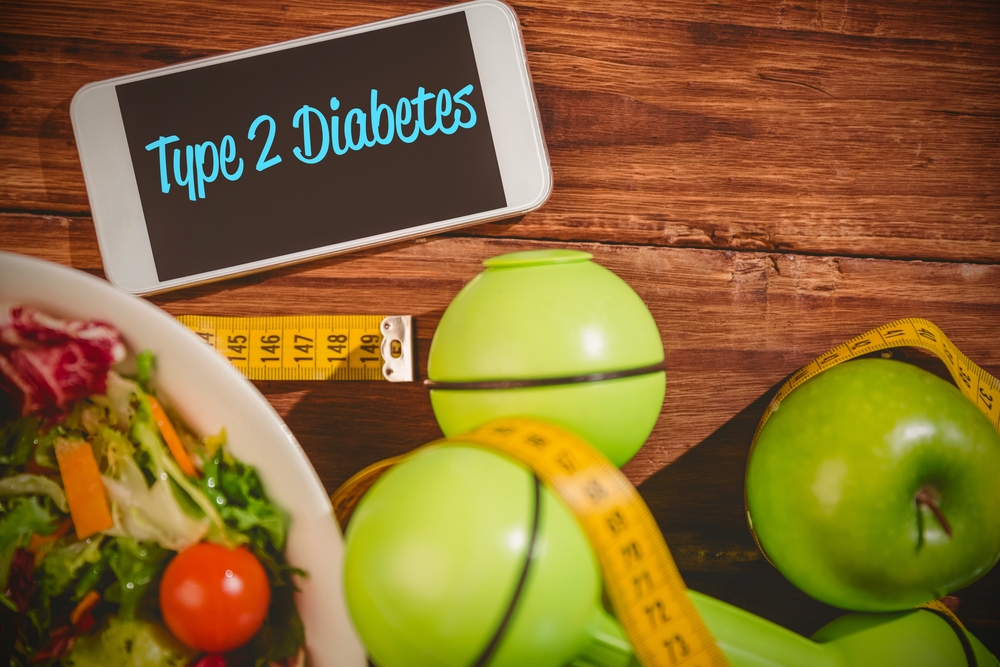What women should know about lowering their risk of type 2 diabetes and metabolic syndrome
It’s sad to me that most of the women we see at our clinic either aren’t concerned about type 2 diabetes — or they already have it. I so wish that all women in the first group would learn from the women in the second. The key lesson is that your risk of developing type 2 diabetes is greater than you probably realize. The good news is you can prevent it, and the path to prevention will awaken you in so many ways.
I see patients who are not overweight and who think they’re leading fairly healthy lives end up with high blood sugar. In fact, some people who have prediabetes or metabolic syndrome are not obese, and may even be considered “thin.” Yet these women can go on to develop type 2 diabetes.
How does that happen? And how do you make sure it doesn’t happen to you? In my view, there are several factors behind the diabetes epidemic. Women don’t realize how much sugar — in all its forms — they are feeding their bodies. Of course, obesity and lack of exercise are enormous issues as well. But few people — and not many doctors — realize that diabetes is a metabolic disorder that has multiple causes
Twenty years ago very few practitioners were aware of metabolic syndrome. In fact, it was a controversial idea. Today it’s a diagnosis that’s broadly accepted in conventional medicine. The new idea today is that there are many metabolic syndromes — a family of related disorders which lead to diabetes as well as to other chronic and degenerative diseases. That may sound scary, but it’s actually good news. It means that medicine is getting insight into how the body works, how to see problems much earlier, and how to prevent disease.
So let’s look into what you can learn now about your risks of developing type 2 diabetes — and how to make sure it doesn’t happen to you.
What is diabetes?
If I told you that people with untreated diabetes were literally starving, would you believe me? It may sound extreme, but it’s true. The term diabetes mellitus is actually derived from the Greek words meaning “to run through.” And this is exactly what’s happening. In diabetes, the nourishment we take in cannot get into our cells, and literally runs through the body instead of feeding it.
Think of feeding your hanging plants with too much nutrient-rich water. Instead of the roots drinking in the nutrients and water, the nourishment runs straight through the soil and trickles out onto the floor. No matter how much you feed the plant, the water runs through it. Eventually its leaves start to yellow, shrivel, or drop. Like your plant, the cells of a diabetic patient can’t absorb the nourishment they need.
Under normal circumstances, our bodies break down food we eat into potential energy. That energy enters the blood stream mostly in the form of glucose. Glucose is then escorted into our cells with the help of the hormone insulin, where it becomes the fundamental fuel for all cell activity. In diabetes, our cells can’t access glucose because insulin is either absent or unable to open the cell door to let it in.
The result is excess glucose or “sugar” floating around in the blood with no place to go. In a desperate effort to restore blood sugar levels to normal, our bodies end up eliminating the unused glucose, allowing it to “run through” our bodies, depriving us of the energy and nourishment we need.
Just as the leaves shriveling on your houseplant signal trouble, your body will try to alert you when it isn’t getting enough fuel. The following are warning signals that your body may already have type 2 diabetes:
- Increased hunger (especially in the form of carbohydrate cravings)
- Increased thirst
- Exhaustion
- Frequent urination
- Weight loss or gain
- Blurry vision
- Cuts or sores that won’t heal
Because your cells aren’t being fed, your brain sends out the message that you’re hungry, tired and thirsty. And though you may be eating and drinking more, your cells are literally starving. This faulty insulin signaling is the thread common to all forms of diabetes.
There are three main types of diabetes: type 1, type 2 and gestational diabetes. Type 1 is characterized by a defect in the islet cells of the pancreas that makes them unable to produce any insulin at all. Previously referred to as juvenile diabetes, type 1 is thought to be autoimmune in nature and is generally diagnosed in early childhood. Type 2, also commonly referred to as adult onset diabetes mellitus or noninsulin-dependent diabetes, develops when cells become resistant to insulin. And gestational diabetes occurs late in pregnancy when a mother’s hormones interfere with her ability to utilize insulin. All forms of diabetes, if left untreated, can lead to serious complications — including eye problems, compromised circulation, kidney damage, and nerve damage.
It may give you some comfort to know that type 2 diabetes doesn’t just hit overnight, but develops gradually over time. And though there are several risk factors that can increase your likelihood of developing it, the progression toward type 2 diabetes begins when you become resistant to your own insulin. In functional medicine, insulin resistance is an early indication of metabolic syndrome.
The connection between metabolic syndrome and type 2 diabetes
Twenty years ago, metabolic syndrome was almost an unknown idea among conventional practitioners. Today it is recognized as the precursor to full-blown diabetes. This is gratifying because it means conventional medicine accepts the idea that diabetes develops over time — it doesn’t just appear overnight.
The diagnosis of metabolic syndrome is made when three or more of five disorders are present in the patient: high triglycerides, low HDL cholesterol, high blood sugar, high blood pressure and an above-average waistline.
In functional medicine, insulin resistance and metabolic syndrome are the same thing. We view them this way because they begin with the same faulty cell signaling that, over time, causes metabolic disorders and damage, symptoms such as those used in the conventional diagnosis of metabolic syndrome, and eventually, degenerative diseases.
New research is showing that we can use specific nutrients to sort out the mixed-up cell signaling that occurs in metabolic syndrome and reverse the problem. This is fascinating to me because it promises that we can use food and supplements to prevent or reverse insulin resistance and other metabolic disorders instead of medication with its unwanted side effects! We will be hearing more about this in the next few years, but in the meantime following a Mediterranean diet can help provide similar effects.
Interestingly, making poor food choices is one of the big culprits leading to insulin resistance in the first place.
What causes prediabetes and the diabetes progression?
Type 2 diabetes manifests itself differently in each individual. And though symptoms and severity may vary, the starting point for most women is a diet with a high glycemic load (high in refined sugars and carbohydrates), combined with inactivity and a family history of type 2 diabetes. Next, the body reacts to high blood sugar by producing more insulin. With persistently high insulin levels, cells eventually build up a resistance to it and stop opening their doors. This stage, known as insulin resistance, is when glucose begins to pass through the body without being absorbed.
Soon enough, the pancreas gets the message and decreases insulin production. As insulin levels drop and diet remains high in glucose, blood sugar continues to creep up. Ultimately, insulin levels drop and blood sugar jumps dramatically. This is the point where the official diagnosis of diabetes is typically made. Since the harmful effects of insulin resistance cut across all the body’s systems, the severity at this point varies widely from individual to individual based on the health of their other systems. While some people with diabetes continue to make small amounts of insulin and can control their blood sugar through diet, others stop producing insulin altogether and have to rely on outside sources of insulin.
Numbers may differ from lab to lab, but type 2 diabetes is generally diagnosed when fasting blood glucose has reached 126 mg/dL or higher (compared to a normal range blood sugar level between 70 and 99 mg/dL). At Women to Women, we feel it’s much more beneficial to watch trends in blood glucose over time than to stick with one number.
In other words, if I see a woman’s blood glucose going up a little every year — even if those levels are still well under 99 mg/dL — I begin working with her right away to make healthy changes in her life. A gradual increase in blood sugar means that her cells are already insulin resistant, though the degree depends on her unique situation. And this is our chance to intervene early!
Fortunately, there are several stops on the pathway to type 2 diabetes and, as with any good road trip, there are various routes available and opportunities to turn around. The problem is that many conventional healthcare practitioners don’t step in early enough to change a patient’s course until it becomes difficult to reverse.
Waiting for sugar
It makes sense that if one out of every three of us is walking around with prediabetes, healthcare practitioners would be prepared to implement strategies to halt its progression to type 2. But this isn’t always the case. Standard blood tests look at blood sugar, among other things, but leave out one of the first indicators of prediabetes: insulin. Remember that insulin levels are among the first markers of change on the pathway to diabetes. At first they increase as insulin resistance sets in, then they start to decrease. So understanding how your insulin is working can help you to make important changes early on.
Sadly, many conventional practitioners lack the time to look closely at a patient’s lifestyle to determine if they could benefit from an insulin test. In fact, there is no set protocol for intervention until blood sugar begins to creep up, which means the patient has passed insulin resistance already. And though you can still reverse the problem, you’re much further along by then.
At Women to Women, we encourage our patients to take the driver’s seat when it comes to their health. Oftentimes, this means taking an honest look at your symptoms, nutrition and exercise habits, and it could also mean deciding for yourself that you could benefit from an insulin test. There is nothing wrong with requesting an insulin test from your healthcare provider yourself.
Staying on top of insulin early can help you avoid type 2 diabetes, insulin imbalance — and the problems associated with it, including imbalance of your sex hormones.
Insulin and hormonal balance
The hormonal systems in our bodies are intricately linked by what is called the endocrine system. And contrary to what many practitioners think, when one aspect of the endocrine system is off-kilter, it can throw other parts out of balance as well. This is the case with diabetes and menopause. Insulin interacts with estrogen, testosterone, DHEA and thyroid hormones. When insulin is out of balance from a poor diet, it can interrupt the regulation of estrogen, testosterone and other hormones. This can make the already bumpy hormonal path during perimenopause even more difficult.
Over time, poor insulin control can send all the body’s systems — neuroendocrine, cardiovascular, digestive and immune — out of balance, worsening your menopausal symptoms significantly.
What many women don’t realize is how nutrition is integrally connected to the web of hormonal balance. Put simply, if you change your diet, you can change your hormones. By eating balanced meals, including complex carbohydrates and high quality protein and fats, you can regulate the insulin your body releases and keep estrogen and testosterone in balance.
Getting back on track starts with making healthier choices.







